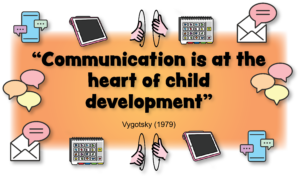The Power of Baby Signing: Benefits for Infants and Toddlers
Welcome to our Baby Sign Information Hub! Here, you’ll discover the many benefits baby signing offers for infants and toddlers. Simply click on the boxes below to explore more insights and resources tailored to support your baby’s signing journey.
Baby signing, the practice of using simple hand gestures to communicate with pre-verbal infants and toddlers, has gained significant traction among parents and early childhood educators. This comprehensive review delves deep into the extensive research surrounding baby signing, exploring its numerous benefits for cognitive development, language acquisition, and emotional well-being.
What is Baby Signing?
Baby signing involves teaching infants and toddlers simple signs based on sign languages (in Australia this is Auslan) to communicate basic needs, wants, and observations before they can speak. This method bridges the gap between a child’s ability to understand language and their capacity to verbalise their thoughts. Please see our frequently asked questions for more information on baby signing.
Research-Backed Benefits of Baby Signing
1. Enhanced Cognitive Development

Numerous studies have demonstrated the positive impact of baby signing on cognitive development:
- Acredolo and Goodwyn’s Landmark Study (2000): This pivotal research, funded by the National Institutes of Health, found that babies who used signs had higher IQ scores (an average of 12 points higher) at age 8 compared to non-signing babies. The study also revealed that by age 3, signing children were developmentally equivalent to 4-year-olds who hadn’t used signs.
- Vallotton’s Research (2011, 2012): Dr. Claire Vallotton’s work showed that baby signing enhances cognitive and emotional development. Her studies found that signing babies displayed more advanced mental skills and were better at self-regulating their behavior.
- Kirk et al. (2013): This study demonstrated that iconic gesture training (similar to baby signing) improved children’s ability to learn and remember new words.
2. Accelerated Language Acquisition
Contrary to concerns that signing might delay verbal development, research consistently shows that it supports and may even accelerate language acquisition:
- Goodwyn, Acredolo, and Brown (2000): Their research found that signing babies, on average, spoke earlier and had larger spoken vocabularies than non-signing babies.
- Thompson et al. (2007): This study observed that signing facilitates the transition to verbal language, with signing children showing more advanced language skills by age 2.
- Seal and DePaolis (2014): Their work suggested that baby signing may enhance phonological awareness, a crucial skill for later reading development.

3. Strengthened Emotional Intelligence and Bonding

Baby signing has been linked to improved emotional development and stronger parent-child relationships:
- Gongora and Farkas (2009): This study found that mother-infant dyads who used baby signs showed more positive emotional interactions and synchrony.
- Mueller and Sepulveda (2014): Their research indicated that signing reduced frustration and tantrums in toddlers by providing an alternative means of expression.
- Kirk et al. (2013): Beyond vocabulary benefits, this study also noted improved parent-child bonding in families that used baby signing.
4. Enhanced Attention and Memory Skills
Several studies have highlighted the cognitive benefits of baby signing beyond language:
- Rowe and Goldin-Meadow (2009): Their work showed that children who gesture more at age 14 months have larger vocabularies at 54 months, suggesting a link between early gesture use and later cognitive abilities.
- Lucero et al. (2014): This study found that infants who use more gestures show better spatial reasoning skills later in childhood.

5. Social and Cultural Benefits

Research has also pointed to broader social and cultural advantages of baby signing:
- Toth (2009): This study found that signing babies showed more advanced social skills and were more likely to initiate social interactions.
- Daniels (2004): Research indicated that exposure to sign language at an early age can increase awareness and appreciation of Deaf culture, promoting inclusivity.
Implementing Baby Signing: Evidence-Based Best Practices
Drawing from various studies, here are some research-supported tips for successful implementation:
- Start early, ideally around 6-8 months of age (Goodwyn et al., 2000)
- Be consistent in your use of signs (Thompson et al., 2007)
- Pair signs with spoken words and facial expressions (Kirk et al., 2013)
- Focus on practical, everyday signs first (Mueller and Sepulveda, 2014)
- Make it fun and interactive (Gongora and Farkas, 2009)
- Celebrate your baby’s attempts at signing (Vallotton, 2012)
The Baby Sign App is perfect for starting your baby sign journey. Click here to download today.
Key Word Sign for Older Children
For older children with speech delays or other communication challenges, Key Word Sign offers similar benefits, this adapted form of signing uses manual signs alongside speech to support understanding and expression. While primarily used with children who have developmental delays or conditions affecting speech, Key Word Sign can be a valuable tool for enhancing communication in various contexts. Please click here for more information.
Conclusion
The extensive body of research on baby signing overwhelmingly supports its use as a powerful tool for enhancing early communication, cognitive development, and emotional well-being. From the groundbreaking work of Acredolo and Goodwyn to more recent studies by Vallotton, Kirk, and others, the evidence consistently points to numerous benefits for both typically developing children and those with additional needs.
As we continue to understand the intricate connections between gesture, language, and cognition, baby signing stands out as a simple yet effective method to unlock a child’s communicative potential. Whether you’re a parent, educator, or healthcare professional, integrating baby signing into your interactions with young children can pave the way for stronger bonds, reduced frustration, and enhanced learning outcomes.
By bridging the gap between thought and spoken language, baby signing doesn’t just teach children to communicate earlier – it opens up a world of understanding, expression, and connection during the crucial early years of development. To get started please visit our getting started page and download our baby sign app.












